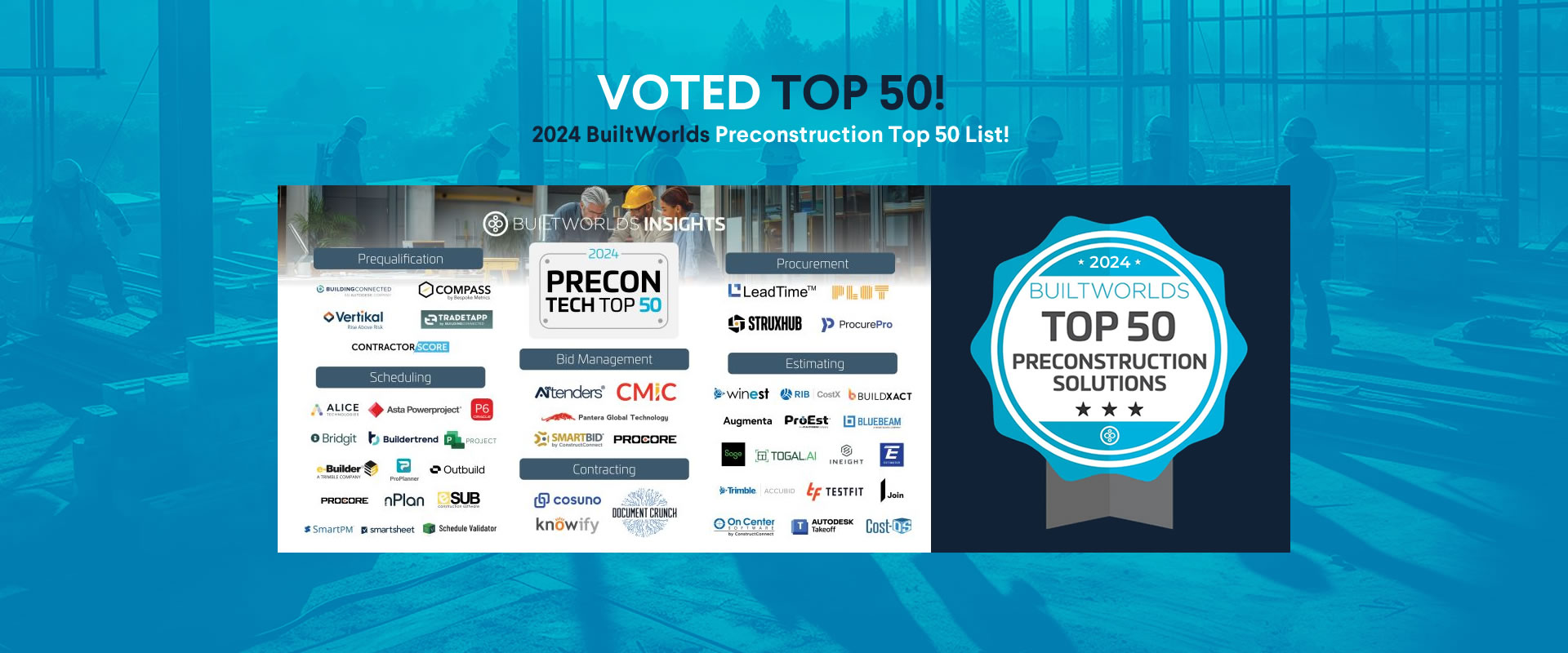Improving Inspection Processes: Enhancing Quality Control in Commercial Construction
Table of Contents:
Problem: Manual inspection processes can be time-consuming and prone to errors, leading to delays and quality issues in construction projects.
Solution: With StruxHub, contractors can create inspection checklists and schedule recurring inspections, improving quality control and reducing the risk of errors on construction sites.”
In the dynamic world of commercial construction, ensuring quality control is paramount to the success of any project. However, traditional manual inspection processes can often be cumbersome, time-consuming, and prone to errors. From overlooking critical checkpoints to misinterpreting data, manual inspections can lead to delays, cost overruns, and quality issues that impact the overall success of construction projects.

The Importance of Quality Control in Construction
Quality control is essential for delivering projects that meet or exceed client expectations while adhering to industry standards and regulations. Effective quality control processes help identify and address potential issues early in the construction process, minimizing rework, reducing waste, and ensuring the safety and integrity of the final structure.
Challenges of Manual Inspection Processes
Manual inspection processes present several challenges that can hinder the effectiveness of quality control efforts in commercial construction projects:
- Time-Consuming: Manual inspections often require significant time and effort to complete, slowing down project timelines and potentially causing delays.
- Prone to Errors: Human error is inevitable in manual inspection processes, increasing the risk of overlooking critical checkpoints or misinterpreting data.
- Limited Visibility: Manual inspection processes may lack visibility into past inspection results, making it difficult to track trends or identify recurring issues.
- Inefficient Reporting: Generating reports from manual inspection data can be labor-intensive and prone to inaccuracies, hindering communication and decision-making.
- Lack of Standardization: Without standardized inspection processes, consistency across projects may be lacking, leading to inconsistencies in quality control efforts.
Solutions with StruxHub
StruxHub offers a comprehensive solution to improve inspection processes and enhance quality control in commercial construction projects:
- Create Inspection Checklists: Contractors can create customized inspection checklists tailored to the specific requirements of each project, ensuring that all critical checkpoints are covered during inspections.
- Schedule Recurring Inspections: StruxHub allows users to schedule recurring inspections at specified intervals, ensuring that inspections are conducted regularly and consistently throughout the project lifecycle.
- Streamline Inspection Workflow: With StruxHub’s intuitive interface and user-friendly features, contractors can streamline the inspection workflow, from assigning inspectors to tracking inspection status and generating reports.
- Track Inspection History: StruxHub maintains a comprehensive history of inspection results, providing users with visibility into past inspections and allowing them to track trends, identify recurring issues, and make data-driven decisions.
- Improve Communication: By centralizing inspection data and reports within the StruxHub platform, contractors can improve communication and collaboration among project stakeholders, ensuring that all relevant parties are informed and aligned.
Top 10 Tips for Improving Commercial Construction Inspection Processes
1. Standardize Inspection Procedures:
Develop standardized inspection procedures and checklists to ensure consistency and thoroughness across projects.
- Problem: Inconsistent inspection procedures can lead to oversights and inconsistencies in quality control efforts.
- Solution: Standardize inspection procedures to ensure that all critical checkpoints are covered during inspections.
2. Train Inspectors:
Provide comprehensive training to inspectors to ensure they understand inspection procedures and can accurately identify and report issues.
- Problem: Inexperienced or untrained inspectors may overlook critical issues or misinterpret inspection data.
- Solution: Invest in training programs to equip inspectors with the knowledge and skills they need to perform inspections effectively.
3. Utilize Technology:
Leverage technology solutions such as mobile inspection apps to streamline the inspection process and improve efficiency.
- Problem: Manual inspection processes are time-consuming and inefficient, leading to delays and bottlenecks.
- Solution: Implement mobile inspection apps that allow inspectors to conduct inspections digitally, saving time and reducing the risk of errors.
4. Prioritize Safety Inspections: Make safety inspections a top priority to identify and mitigate potential hazards before they cause accidents or injuries.
- Problem: Overlooking safety inspections can result in workplace accidents, injuries, and costly regulatory fines.
- Solution: Schedule regular safety inspections and ensure that all safety protocols and regulations are followed.
5. Empower Field Teams: Empower field teams to conduct inspections and report issues in real-time, enabling quick response and resolution.
- Problem: Relying solely on centralized inspection teams can lead to delays in identifying and addressing issues.
- Solution: Provide field teams with the tools and training they need to conduct inspections independently and report issues promptly.
6. Implement Quality Assurance Measures: Implement quality assurance measures to ensure that construction materials and processes meet specified standards and requirements.
- Problem: Inadequate quality assurance measures can result in subpar construction quality and customer dissatisfaction.
- Solution: Develop quality assurance plans and procedures to monitor and verify the quality of construction materials and workmanship.
7. Regularly Review and Update Checklists: Regularly review and update inspection checklists to reflect changes in project requirements or industry standards.
- Problem: Outdated inspection checklists may not adequately address current project requirements or compliance standards.
- Solution: Establish a process for regularly reviewing and updating inspection checklists to ensure they remain relevant and effective.
- Encourage Collaboration: Encourage collaboration and communication among project stakeholders to identify and address inspection issues promptly.
8. Encourage Collaboration: Encourage collaboration and communication among project stakeholders to identify and address inspection issues promptly.
- Problem: Poor communication and collaboration can result in delays in resolving inspection issues and addressing quality concerns.
- Solution: Foster a collaborative environment where all project stakeholders are encouraged to communicate openly and work together to resolve inspection issues.
9. Monitor Performance Metrics: Monitor key performance metrics related to inspection processes, such as inspection completion rates and issue resolution times.
- Problem: Without monitoring performance metrics, it’s challenging to identify areas for improvement and measure the effectiveness of inspection processes.
- Solution: Establish performance metrics and regularly monitor them to track the effectiveness of inspection processes and identify opportunities for improvement.
10. Seek Feedback: Solicit feedback from project stakeholders, including inspectors, contractors, and clients, to identify areas for improvement and implement changes accordingly.
- Problem: Without feedback from key stakeholders, it’s challenging to identify systemic issues and implement effective solutions.
- Solution: Actively seek feedback from project stakeholders to gain insights into the effectiveness of inspection processes and make continuous improvements.
Elevating Quality Control with StruxHub
In conclusion, improving inspection processes and enhancing quality control in commercial construction projects is essential for delivering projects on time, within budget, and to the highest standards of quality. By leveraging technology solutions like StruxHub, contractors can streamline inspection workflows, improve communication, and reduce the risk of errors and delays on construction sites.
At StruxHub, we are committed to helping contractors optimize their inspection processes and enhance quality control in construction projects. Our comprehensive suite of tools and solutions is designed to empower contractors to conduct inspections more efficiently, accurately, and consistently. Ready to take your inspection processes to the next level?
Sign up for a free demo of StruxHub today!




